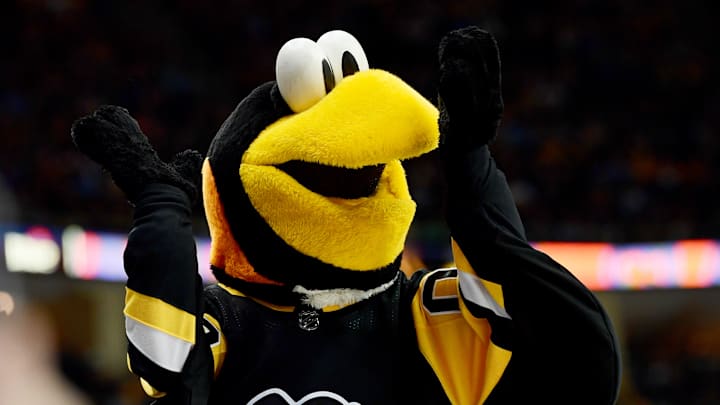When you think of NHL mascots, Philadelphia’s Gritty might grab the headlines—but has he ever starred in a movie? Pittsburgh’s Iceburgh has, but more on that later.
Since his debut in 1992, Iceburgh has been a central figure in the Penguins’ identity, rallying fans and symbolizing Pittsburgh’s deep love for hockey.
As one of the NHL’s most beloved mascots, Iceburgh has made many appearances and has made quite a name for himself over the years.
How Iceburgh became the Penguins' mascot, when did he debut?
In the early 1990s, the Pittsburgh Penguins transformed their franchise by securing back-to-back Stanley Cup victories under the leadership of Mario Lemieux and the emerging star Jaromir Jagr.
Winning the cups sparked a desire within the organization to create a mascot that would enhance the fan experience both on and off the ice.

The goal? The Penguins aimed to develop a character that embodied the excitement, community spirit, and winning tradition of the Penguins.
The result was Iceburgh, a cartoon-like penguin who quickly became a fixture at every home game and a beloved figure within the fan base, making his debut during the 1992-93 season.
Designed to be approachable and engaging, Iceburgh captured the feel of popular mascots in the 1990s. His name, "Iceburgh," cleverly referenced the sport of hockey and the city's nickname, "The 'Burgh."
Notable moments in Iceburgh’s history
One of Iceburgh's most memorable moments occurred in 1995 when he made a cameo in the action film Sudden Death, starring Jean-Claude Van Damme.
This Hollywood appearance, set during a fictional Stanley Cup Final at Pittsburgh's Civic Arena, featured a fight scene that remains impressive even today. Highly recommend watching it if you haven't—seriously, if you haven't seen it yet, what are you even doing?
Iceburgh's impact, however, stretches far beyond the rink. His regular involvement in charity events, hospital visits, and local fundraisers has brought happiness and support to those in need, establishing him as a symbol of goodwill within the Pittsburgh community.
Iceburgh's contributions have also been recognized within the mascot community. He was featured on the 2021 ballot for the Mascot Hall of Fame. A feather in his cap.
Who was the Penguins’ mascot before Iceburgh?
Before Iceburgh took the ice, the Penguins had a couple of unique mascots.
The first was Pete, a real Humboldt penguin brought in from the Pittsburgh Zoo in 1968. Although Pete captured the hearts of many, his time with the team was cut short due to illness.
The Pittsburgh Penguins once had a real mascot penguin that they named Pete. They tried to teach it how to skate but unfortunately, it got pneumonia and died. They had another one after that they named 'Re-Pete'' . 🐧
— Hockey Of Tomorrow (@HockeyTomorrow) July 3, 2023
Yes, it's a true story #LetsGoPens pic.twitter.com/Go3zJsoit1
A second penguin, named Re-Pete, was introduced a few years later during the 1971-72 season, but he never really reached the popularity level as the original Pete.
The Penguins then went without an official mascot until Iceburgh debuted in 1992, marking the start of a new era.
